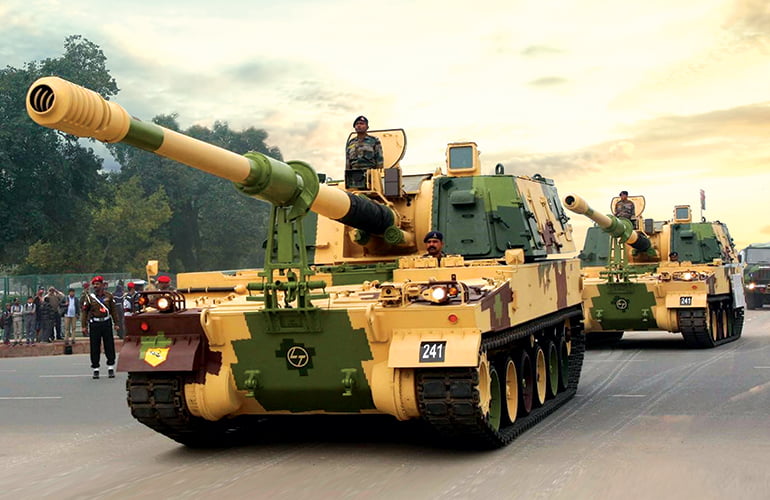The Ministry of Defense has started moving cases to place a new order for another 200 155mm tracked self-propelled howitzers worth over Rs 10,000 crore. L&T, a private sector defense company is a potential candidate to the government’s plan to modernize the military, create an industrial defense base and reduce defense imports.
A self-propelled gun is a tank chassis equipped with a howitzer designed to provide firepower to mobile columns A K9 Vajra weighs 50 tons and can fire projectiles up to over 50 kilometers. LandT had delivered 100 K9 Vajra for Rs 4,500 crore in partnership with South Korean defense firm Hanwha Defence.
The contract was signed in May 2017 and the 100th gun was delivered to the army in February 2021. It remains the largest Make program in India signed and completed under the watch of this government. It is also the fastest way for the army to acquire modern artillery artillery systems. A new order, which could be placed later this year, will see the guns start firing from Hazira by 2023, with all deliveries completed before 2028.
Many of these guns will be specially modified with upgraded engines to operate in the cold high altitude deserts of Ladakh and Sikkim.It is no exaggeration to believe that this massive order could be one of the highlights of Defexpo 2022, the biennial of land and naval systems of the Ministry of Defense.
The twelfth chapter of Defexpo will be held in Gandhinagar, Gujarat from March 10-13. It also coincides with government efforts to turn Prime Minister Narendra Modi’s home state into a defense industrial hub. Until last year, the army had planned to order just one more K9 regiment. How did it become a huge 10 regiments?
One of the reasons, of course, was the Chinese military deployment, which began in eastern Ladakh in May 2020. The existing five regiments of the Vajras Army (each regiment has 18 guns, not counting the two in reserve) were not acquired for the mountains, but to operate with the Indian army, three-strike corps stretched across the plains of Punjab and the semi-deserts of Rajasthan.
The deployment of the People’s Liberation Army and subsequent activation of the entire northern and eastern border saw the army scramble to acquire modern artillery. Late last year, three K9s were moved to eastern Ladakh on a trial basis. A senior artillery officer from the Northern Command based in Udhampur was a major driving force behind this unusual deployment.The guns are mounted from Leh to the forward areas of eastern Ladakh with their own power (instead of a tank trailer), demonstrating their ability to operate independently.
What seemed to have been overlooked was that these guns were originally designed to operate in South Korea, a rugged, mountainous country with a hostile neighbor and climatic conditions that could mimic those in eastern Ladakh. However, Indian Army K9s still needed to be modified with special low temperature field kit with LandT engineers.
The range tables and the software that drove these guns were modified, also in the field, by the engineers. The weapons are believed to have performed very well, which bolstered their case for more weapons. Self-propelled artillery, you won’t run out of the whole frontier,” says Lt. Gen. P Ravi Shankar, former Director General of Artillery. The army’s howitzer acquisitions were going nowhere. The acquisition of 400 towed howitzers.”
Israeli company Elbit’s Athos” was repeatedly dismissed by the Ministry of Defense and the case was finally closed late last year. Private and public sector range developer. ‘army, the two most promising native artillery systems have yet to be issued.Design flaws in the Dhanush, an indigenous version of the FH77B Bofors, jeopardized an Army order for 114 guns. to annul the army trials. The military thinks it can use these weapons until at least 2025 to get through its hardships.
The army then cannibalized its demand for nine wheeled howitzer regiments, a 155mm howitzer mounted on a 6×6 armored vehicle, to make way for the K9s. The wheeled howitzer program was one of five different types of howitzers designed after the Kargil War and whose requirement was accepted by the government.
About 3,000 new guns were to be purchased in trailers, wheeled and tracked systems (on a tank chassis, like the K9), mounted gun systems (on a truck chassis), and ultralight howitzer categories . Only mounted gun systems and wheeled howitzers need to be purchased
